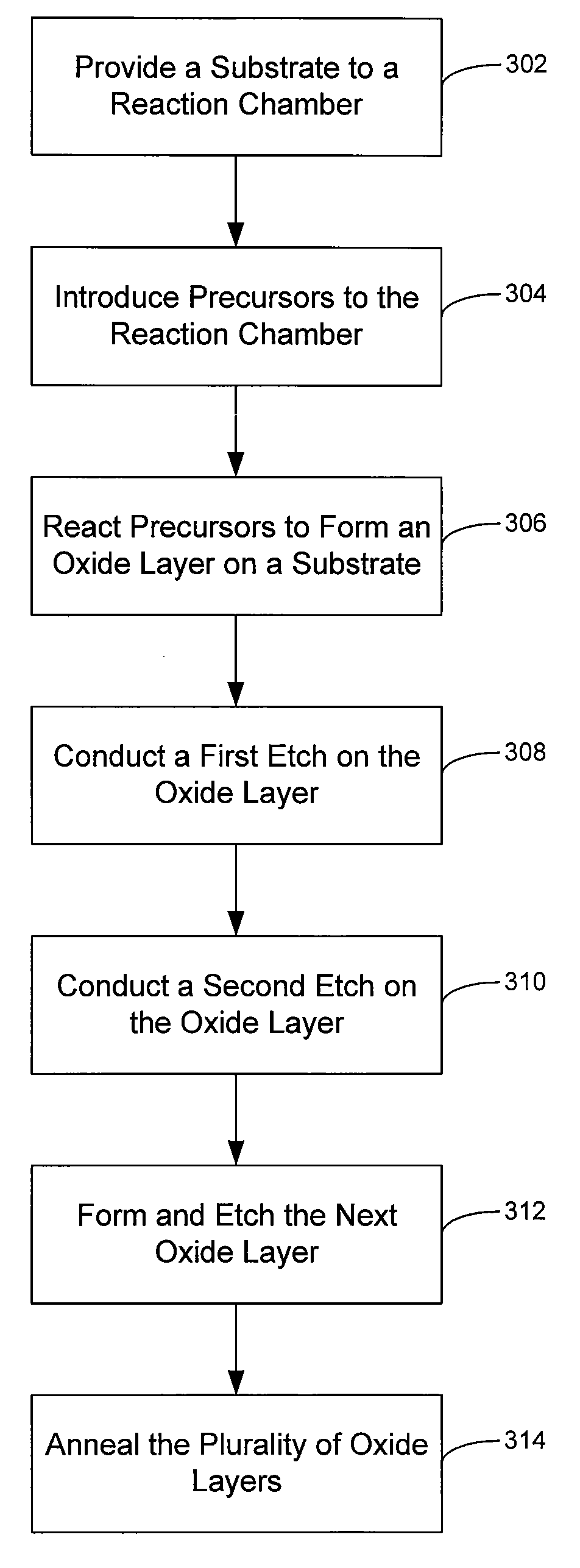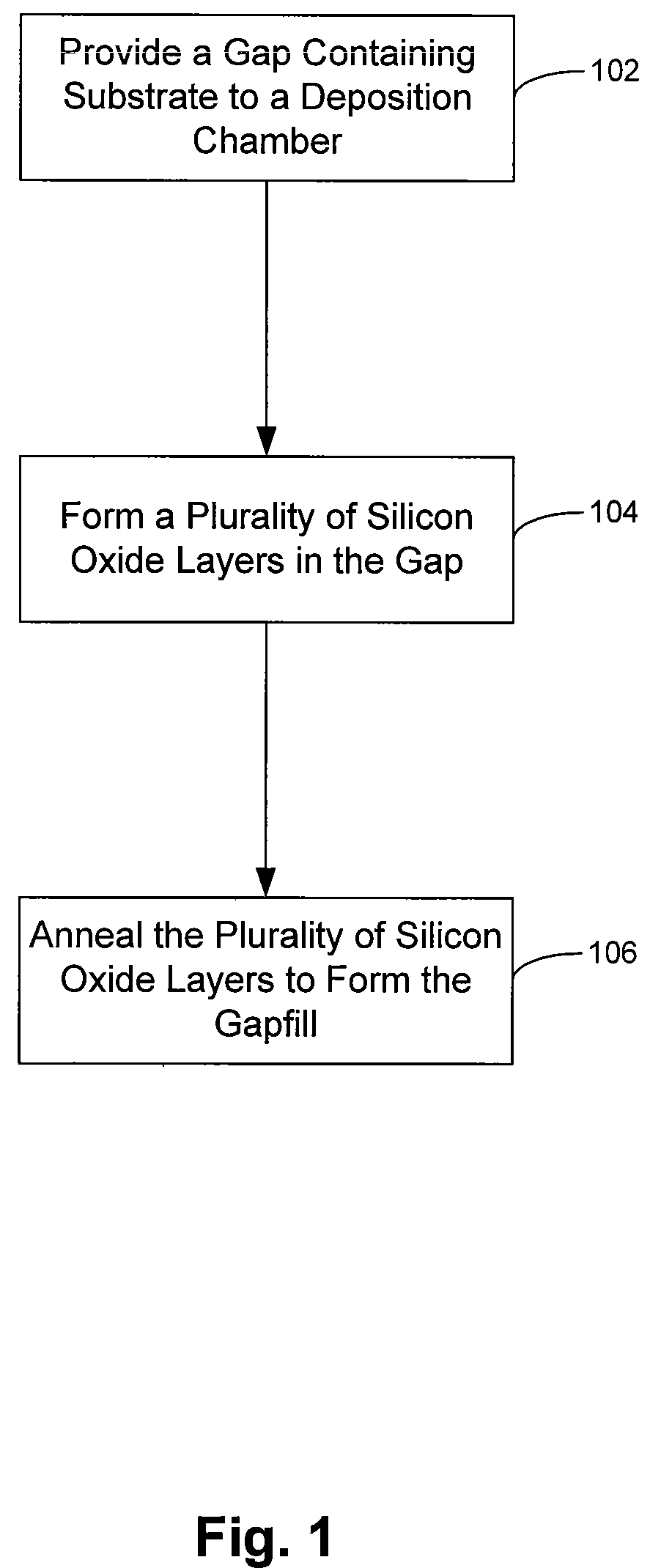Deposition-plasma cure cycle process to enhance film quality of silicon dioxide
a technology of depositionplasma and cure cycle, applied in the field of depositionplasma cure cycle process to enhance the film quality of silicon dioxide, can solve the problems of difficult to completely fill gaps and trenches in these structures without creating, too much electrical noise, and difficult to completely fill gaps and trenches in these structures, so as to reduce the carbon content in the layer
- Summary
- Abstract
- Description
- Claims
- Application Information
AI Technical Summary
Problems solved by technology
Method used
Image
Examples
Embodiment Construction
Systems and methods are described for multilayer, multicycle depositions of silicon oxide in gaps and on surfaces of a wafer substrate. Each oxide layer is thin enough (e.g., about 50 Å to about 300 Å) to allow an etch process to dissociate and remove impurities such as organic and hydroxyl groups that can adversely effect the quality and dielectric properties of the film. When a plurality of the oxide layers have been deposited and etched, an anneal may be done to form the layers into a high-quality, low-k silicon oxide film.
The silicon oxide may be formed from a reaction of highly reactive atomic oxygen and an organo-silicon precursor, such as OMCATS. The atomic oxygen may first be generated outside the chamber were the deposition occurs, and kept isolated from the organo-silicon precursor until they are mixed in the chamber. The resulting silicon oxide is carbon rich and highly flowable, providing a deposition film that easily flows to the bottoms of narrow gaps and trenches. Aft...
PUM
| Property | Measurement | Unit |
|---|---|---|
| temperature | aaaaa | aaaaa |
| temperature | aaaaa | aaaaa |
| temperature | aaaaa | aaaaa |
Abstract
Description
Claims
Application Information
 Login to View More
Login to View More - R&D
- Intellectual Property
- Life Sciences
- Materials
- Tech Scout
- Unparalleled Data Quality
- Higher Quality Content
- 60% Fewer Hallucinations
Browse by: Latest US Patents, China's latest patents, Technical Efficacy Thesaurus, Application Domain, Technology Topic, Popular Technical Reports.
© 2025 PatSnap. All rights reserved.Legal|Privacy policy|Modern Slavery Act Transparency Statement|Sitemap|About US| Contact US: help@patsnap.com



